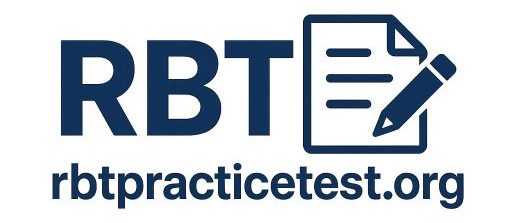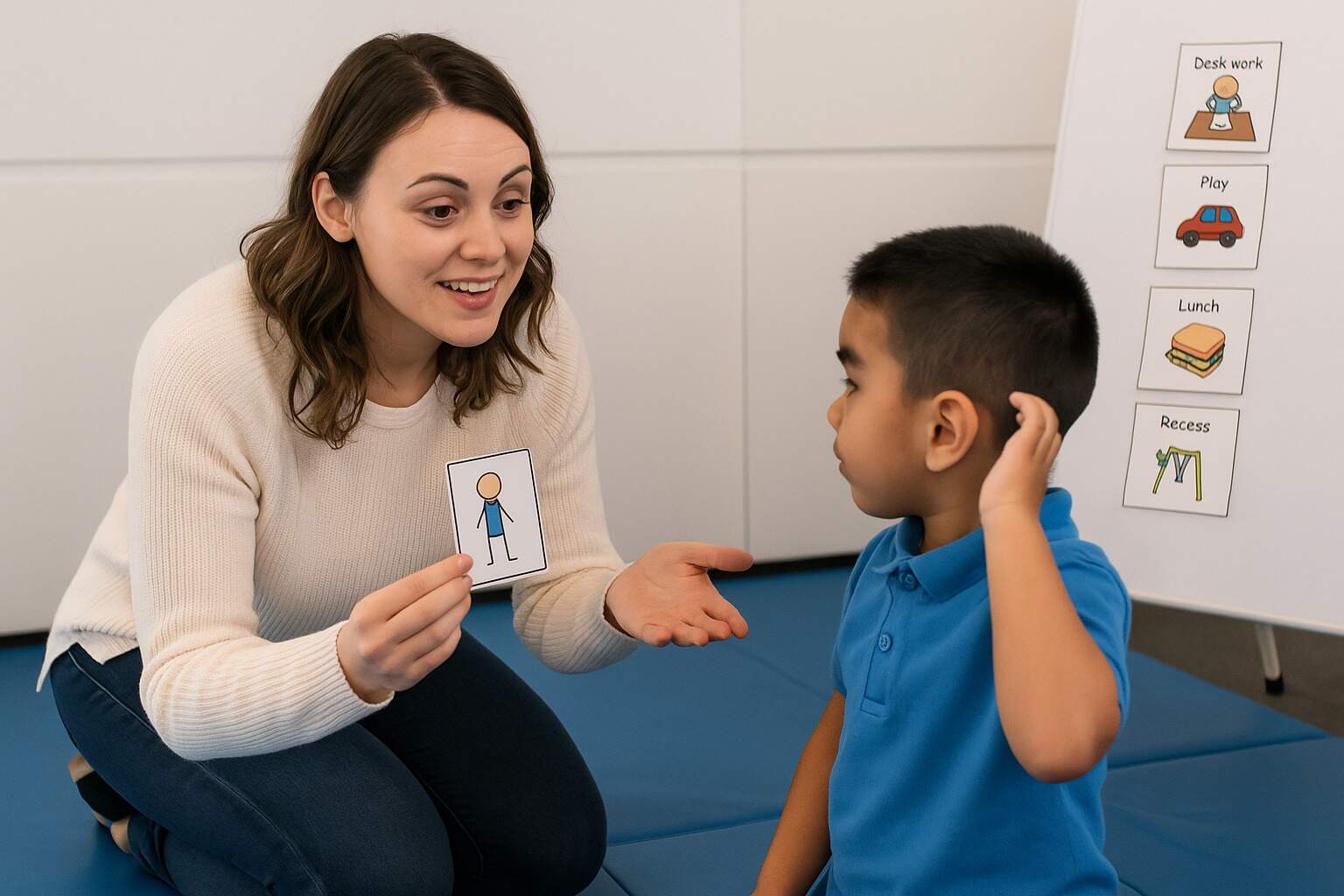Prompting stands as one of the most powerful tools in an RBT’s skill set. In the world of Applied Behavior Analysis, knowing when and how to provide support, and when to step back, makes a real difference in a learner’s progress. Prompting helps guide individuals toward mastering new skills while gradually building their confidence and independence.
This content explores what is a prompt, when and how prompts are used in ABA, explains the prompt hierarchy and outlines prompt scripting and fading techniques that support independence over time. With a strong grasp of prompting, you’ll be better prepared to create individualized interventions that lead to lasting behavioral success.
What is a prompt?
A prompt delivers assistance or a cue before a learner starts a task. In our work as RBTs, prompts guide learners toward correct responses within ABA programs. Prompts serve as antecedents, so we always use them before the expected behavior, not after the learner has already responded.
A prompt can appear in many forms. For example, verbal prompts include stating the first sound of a word, while gestural prompts involve pointing or nodding to direct attention.
- Modeling prompts happen when we demonstrate the correct action, and the learner imitates it.
- Physical prompts consist of guiding a learner’s hands either partially or completely to complete a task, such as tying shoelaces.
- Visual prompts include photos, symbols, or written instructions.
- Positional prompts place the correct choice closer to the learner, helping them make the correct response more likely.
Each prompt type offers a different level of support, let RBTs tailor our approach to meet each learner’s needs.
Prompts help minimize errors and prevent repeated mistakes during skill acquisition. Unlike correction after errors, prompts foster what research identifies as errorless learning, which helps learners build confidence and mastery in new skills while reducing frustration.
How and when are prompts used in ABA?
Prompts in Applied Behavior Analysis (ABA) help learners achieve the correct response before mistakes happen. RBTs introduce prompts in the antecedent stage, just after a direction and before the learner responds, to guide accurate performance.
Why not simply correct learners after a mistake?
Relying only on correction after mistakes limits effective learning in ABA. Prompts proactively guide learners to the correct response, which minimizes errors and builds positive associations.
We use prompts to prevent repeated errors, support confidence, and encourage engagement from the start. Systematic prompting and prompt fading enable gradual reduction of assistance, fostering mastery and independence.
Research confirms that this proactive approach increases both correct responses and learner self-sufficiency compared to correction-only methods (Cooper, Heron, & Heward, 1987). For example, using a verbal or gestural prompt before a likely mistake leads to fewer errors and faster skill acquisition than waiting to correct errors after they occur.
How much should you prompt?
Prompting requires a tailored balance that considers both the learner’s current skill level and the complexity of the task. RBTs optimize skill acquisition and independence by adjusting the amount of prompting based on these variables.
Least-to-Most
Least-to-most prompting involves starting with the least intrusive prompt and increasing assistance only as needed. It gives learners the opportunity to attempt a task independently before providing more direct support.
For example, we might use a time delay or visual prompt first, then progress to gestural, verbal, or finally physical prompts if errors or inaction occur. This approach works well for learners showing emerging skills or when minimal help encourages initiative.
Most-to-Least
Most-to-least prompting begins with the most supportive prompt, such as full physical assistance, then systematically reduces prompt intrusiveness as mastery improves. RBTs can apply this when learners require substantial support to avoid repeated errors, especially for completely new or complex tasks.
As learners demonstrate correct responses, RBTs fade prompts down the hierarchy (from physical to verbal, then to gestural or visual). This technique fits situations where independence tends to grow only after sustained initial guidance.
The prompt hierarchy
The prompt hierarchy in ABA therapy provides a structured order for delivering support, ensuring we use the least amount of assistance necessary to help the learner succeed. This systematic approach enables us to fade prompts efficiently and promote independent responding.
Core prompt types in the hierarchy:
- Physical prompts: Physical prompts offer direct assistance. We use these for tasks requiring motor skills, for example, guiding a learner’s hand when teaching handwashing.
- Verbal prompts: Verbal prompts use spoken cues or instructions. Common examples include reminding a learner with phrases like “Try this” or “What comes next?”
- Gestural prompts: Gestural prompts involve non-verbal signals. We might point to an object, nod, or use a head gesture to encourage correct responses.
- Visual prompts: Visual prompts provide pictorial or symbolic cues. Examples are schedules, photos, or icons demonstrating the expected behavior.
- Positional prompts: Positional prompts involve arranging items to make the correct choice more accessible, such as placing a target picture closer than distractors.
When applying the hierarchy, our goal is to achieve maximum independence while reducing errors. Fading prompts strategically, either within or across these categories, tailors support to the learner’s needs and prevents prompt dependency.
Implementing the prompt hierarchy allows us to personalize interventions for each learner. For example, RBTs might start with a physical prompt if a learner struggles significantly, then shift to less intrusive prompts as proficiency increases. Conversely, if a learner only requires minimal assistance, we begin with visual or gestural cues. This is also aligned with what the skill acquisition plan outlines, which covers prompting techniques as part of skill acquisition strategies.
Prompt scripting & fading
Prompt scripting in ABA therapy organizes how we use and fade prompts. We identify the target behavior, select the most appropriate prompts, and lay out a sequence for their use and removal.
By scripting the process, we clarify which prompts, physical, verbal, visual, or modeling, appear first, under what conditions they shift, and when to reduce or withdraw them. For example, physical prompts serve as initial support for learners needing significant guidance, while visual prompts cue learners with more established skills.
Prompt fading systematically reduces prompts to encourage independence. We adjust support by steps, using strategies that match task and learner needs:
- Most-to-Least prompting: start with the most supportive prompt, such as full physical guidance, and reduce support stepwise as the learner succeeds. This suits tasks requiring high initial accuracy, for example, hygiene routines.
- Least-to-Most prompting: begin with minimal support, like a subtle gesture, and increase prompt level only if the learner doesn’t respond. This approach works for skills the learner nearly masters, such as labeling objects.
- Graduated guidance: provide just enough support at the moment. Physical guidance decreases as competence increases, for example, teaching hand washing.
- Time delay: introduce a brief wait before adding a prompt, giving the learner a chance to respond independently. For instance, RBTs show a visual cue, pause, then provide a verbal instruction only if the learner hasn’t responded.
RBTs monitor and document every prompt and fading step. Session notes track which prompts led to success, inform decisions to step back to more intrusive prompts, and identify the right time to shift forward.
Below is prompt fading strategies and their contextual examples:
| Prompt fading strategy | Description | Contextual example |
| Most-to-Least Prompting | Reduce support from maximum to minimum as learner performs better | Handwashing routines |
| Least-to-Most Prompting | Start with minimal support, add as needed for unmastered responses | Object labeling tasks |
| Graduated Guidance | Give only as much support as needed, fade physical prompts quickly | Brushing teeth |
| Time Delay | Wait before prompting, allowing independent response | Matching cards |
Clear prompt scripting and fading enable us to customize support, minimize learner frustration, and improve their independence and adaptive skills across diverse environments.
Effective prompting lays the foundation for skill acquisition, especially when teaching multi-step behaviors. As learners progress, structured methods like chaining help break down complex tasks into manageable steps, where prompts are systematically used and faded within each phase of the sequence.

